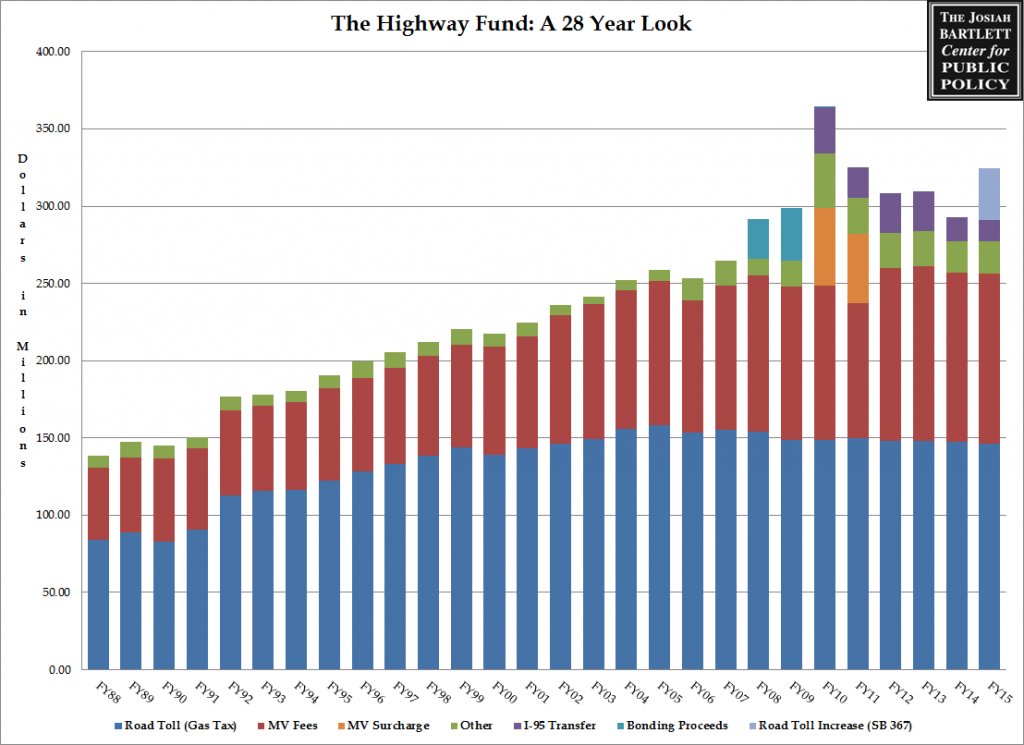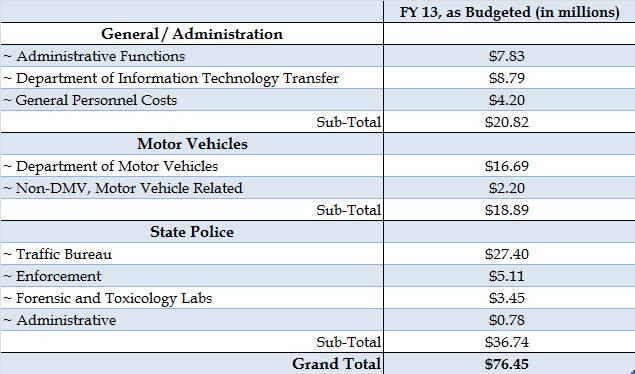Click on the image to view in full screen
Key:
Blue: The Road Toll, or ‘Gas Tax’. This tax generates the largest portion of revenue for the Highway Fund, is raised as a per gallon tax on all gasoline or diesel sold. Revenues are currently falling due to more fuel efficient vehicles using less gas. However, vehicles are still putting the same wear and tear on the road, meaning expenses for maintenance are still the same. It was increased in 1991 and 2014.
Red: Motor Vehicle Fees (MV Fees). This is the portion of the Motor Vehicle Fee that is collected by the state. The amount paid depends on the weight of the vehicle.
Orange: Motor Vehicle Surcharge (MV Surcharge). This was a charge added on top of the existing Motor Vehicle Fees, that ranged from $30 to $75 depending on the weight of the vehicle. It automatically sun-setted in 2011.
Purple: The I-95 Transfer. In order to get money out of the protected Turnpike Fund, the state sold a 1.6mi portion of I-95 to the Turnpike System. The money was to be paid over a term of 20 years, but was accelerated to be paid in just 6. The total amount transferred, including interest, was 131 million.
Turquoise: Bond Proceeds. Bonds were issued in 2008 and 2009, backed by future Highway Fund revenue. The total amount raised from the issue was $60 million.
Periwinkle: Road Toll Increase (SB 367): This is the revenue raised from the most recent increase in the gas tax. The revenue in the first years was allocated to road work projects across the state, with funds in the later years dedicated to paying off the bonds for the expansion of I-93. This increase is due to sunset, once all of the bonds have been repaid in full.
Green: Other. This is a catch all for other, minor sources of revenue to the highway fund, such as fines.


